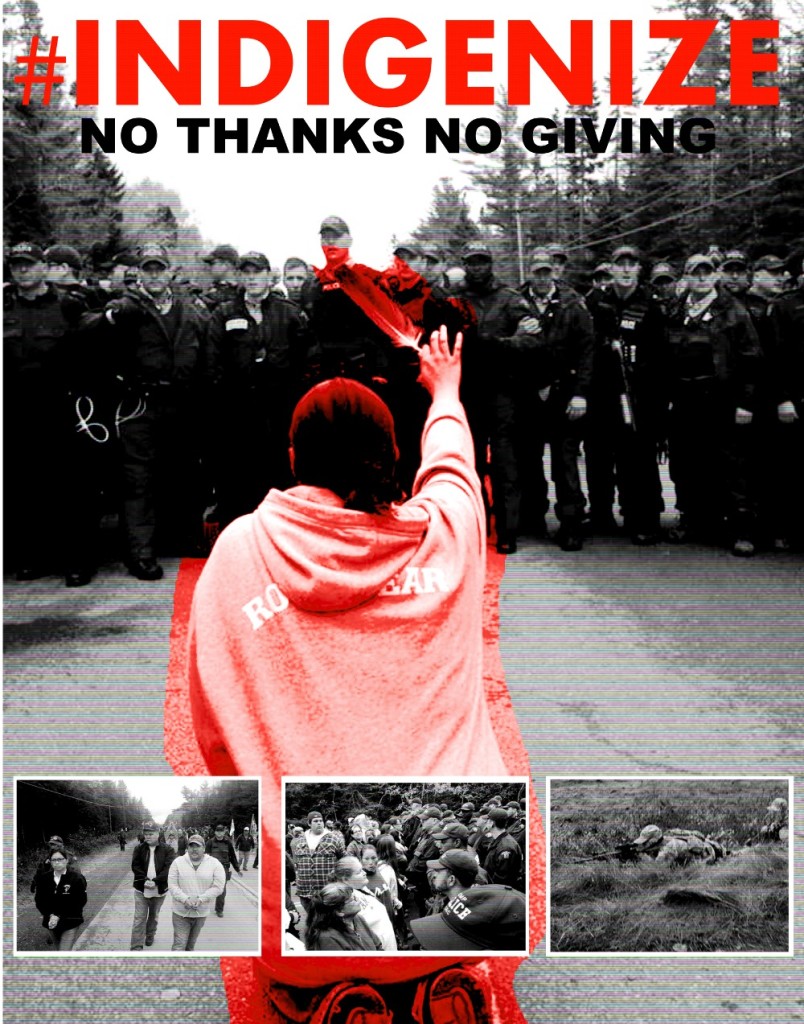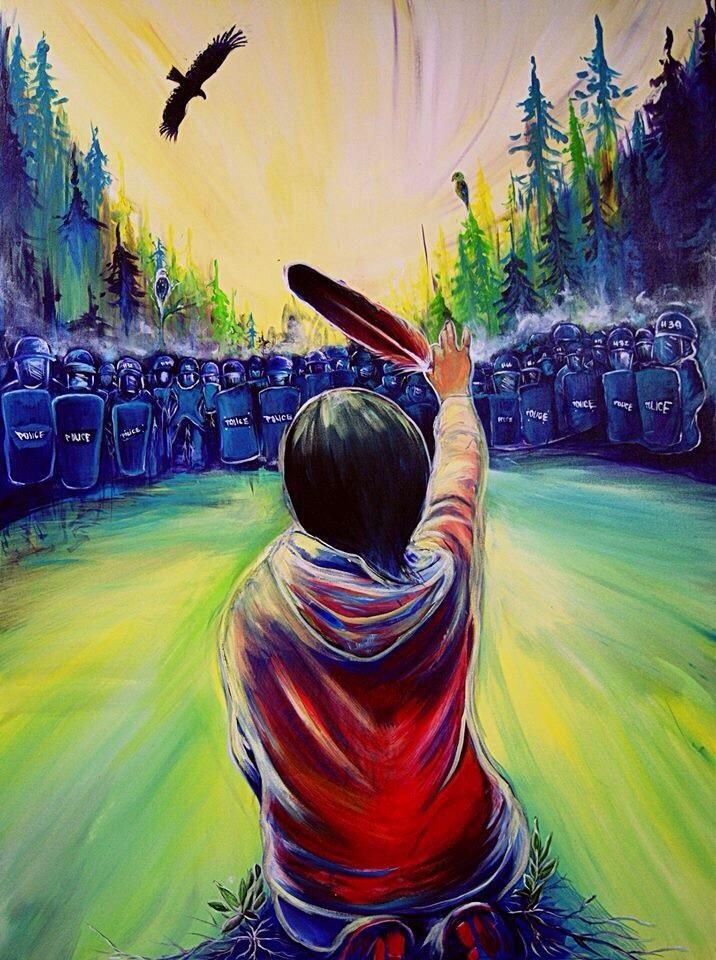Though I will be writing on the events that took place on October 17, 2013 when the RCMP raided a peaceful blockade by members of the Elsipogtog Mi’kmaq First Nation, for now I just want to provide people with some already available and excellent resources on the subject. What I won’t be doing is linking to the plethora of unbelievably racist articles that are pouring out, branding the people of Elsipogtog as everything from terrorists, to puppets of environmental NGOs. These pieces already have mainstream attention, capture mainstream attitudes towards indigenous peoples, and are pretty successfully creating the official narrative.
If you want to delve deeper, or need resources with which to counter these portrayals, here you go!
If you have time for only one article, then you need to read this one, written by Martin Lukacs: “New Brunswick fracking protests are the frontline of a democratic fight.”
It does an excellent job of refocusing attention on the reason the blockade existed in the first place, and on the fact that the area in question has never been ceded to Canada, and thus is not owned by Canada. The people of Elsipogtog have been branded as law breakers, but the legality of Canadian actions in that area are completely undermined by this very central fact.
To keep us in that vein, here is an article from 2012 which discusses the fact that 67 per cent of people in New Brunswick support a moratorium on fracking. This is an intensely controversial practice and people throughout Canada and the US, native and non-native alike, stand in opposition to it. The people of Elsipogog are not on the fringe of an issue here, they are in the majority.
For a really good breakdown of the order in which things happened, Daniel Wilson provides us with, “Out of order: Indigenous protest and the rule of law“. He brings up some important issues about the public’s love affair with the ‘rule of law’ from such a distinctly one-sided perspective, which ignores the underlying illegitimacy of Canadian claims to the land in question and the unceasing violation of the ‘rule of law’ by the Crown.
This article: “Elsipogtog “Clashes” 400 years in the making”, by Dru Oja Jay, goes into good detail about some of the history of the area, and how high tensions have run between the Mi’kmaq and the Canadian government. State violence against the Mi’kmaq people has been an ongoing problem, and Elsipogtog is merely the latest in a line of such.

Leanne Simpson, in her brilliant piece “Elsipogtog Everywhere” brings more context to the deeper issue of the land, and the way in which reconciliation cannot occur without a conversation about that land. If you need to know what deeper acts of resurgence are occurring outside of reactive blockades to deal with lack of consultation and the prioritising of corporate interests over the wishes of all people living in the area, then this article provides it. This is one of the most honest and hopeful pieces I have read on the subject, and it helped me deal with the flood of emotions I’ve been experiencing since watching this all go down on October 17th.
By the way? What the heck is fracking? Here is a video that provides a simple, clear description of the process of fracking, summarising the pros and cons: “CNN Explains: Fracking“.
Recently, a claim was made by He Who Shall Not Be Named (because the guy literally gets paid to troll, and every little mention puts more money in his bloated pocket) that the people of Elsipogtog are basically puppets of foreign environmental groups. The article “Fracking Indigenous Country” (under the donation appeal) is a very long, but detailed rebuttal of any such claims. If you were at all wondering about whether this could be true, this article does an amazing job of completely demolishing these fantasies.
Rex Murphy really put his foot in it as well. Here are two very good responses to his patronising, racist article: “Rex Murphy and the Frames of Settler Colonial War” by Corey Snelgrove, and “Dear Rex: Colonialism exists, and you’re it” by Nick Montgomery.
Jian Ghomeshi put out an audio essay on the incident, summarizing the different opinions and posing some of the important questions the public needs to be asking. He also helps you learn how to pronounce Elsipogtog!
There have been a lot of conspiracy theories going around about provocateurs and US military involvement and so on. Here is an incredibly detailed article by Gord Hill about the tactics and equipment used during the raid which should help dispel some of the most outlandish rumours without downplaying the level of violence initiated by the RCMP: “Overview of RCMP deployment against Mi’kmaq blockade, Oct 17, 2013.”
Another article by the same author questions the rumours about provocateurs setting fire to the RCMP vehicles: “Statement on Provocateurs, Informants, and the conflict in New Brunswick.” Snitch-jacketing, or labeling people as provocateurs or agents of the state is an incredibly divisive and dangerous practice and whether the rumours are spread by law enforcement or our own communities, we have to be careful.
While this next article is not about Elsipogtog, it is nonetheless a very important read. “An open letter to peaceful protestors” debunks a lot of the myths about way peaceful protest was used during the Civil Rights Movement, and clarifies the difference between peaceful, and legal. The need to be organised rather than simply reactive, is highlighted and explained. Every person wanting to be involved in any sort of protest, solidarity action or larger movement, needs to read this article and really think about what it is saying.
To wrap up, I want to thank the artists who have so quickly responded with their support of the movement.




